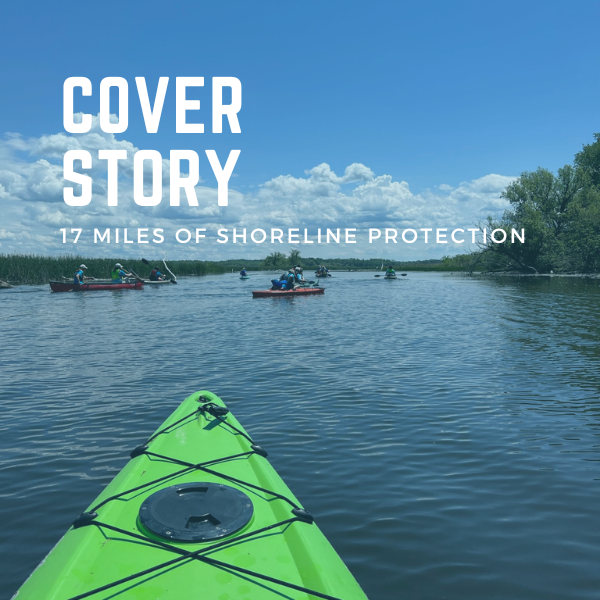This article was featured in the 2022 summer newsletter by Rob Williams and Brittney Rogers-SLELO PRISM.
Along the eastern shoreline of Lake Ontario lies an inter-connected system of coastal barrier dunes and tributaries. These coastal dunes and tributaries act as a natural green infrastructure bringing stability to the habitats they support.
The Eastern Lake Ontario Dune system is a 17-mile barrier beach designated as a Natural Heritage Area and proposed National Marine Sanctuary. Invasive species threaten the integrity of the dunes and pose significant threats to endangered species that occupy the dunes, including piping plovers, hairy-necked tiger beetles, and Champlain beach grass.
Great Lakes Dunes are a community dominated by grasses, shrubs, and trees that occur on sand dunes along the shores of the Great Lakes. Portions of the South Sandy Creek tributary meander through the NYSDEC Lakeview Marsh Wildlife Management Area with emergent marsh as the dominant ecological communities in the riparian zone. Stands of common reed (Phragmites australis) and Japanese knotweed (Reynoutria japonica) affect the integrity of these interconnected systems. Small-scale projects that restore critical corridors can have profound impacts on ecological integrity and resilience in connected landscapes. Scale is an important factor when it comes to conservation work. When you think of large continental conservation efforts, the Blue Ridge to Boreal Initiative, for example, the vision can be so big that it is easy to forget the power of the smaller-scale work that can collectively impact our efforts.
The Saint Lawrence Eastern Lake Ontario Partnership for Regional Invasive Species Management (SLELO PRISM) team is collaborating with multiple partners including the Eastern Lake Ontario (ELO) Dunes Coalition, the ELO Dunes Foundation, NYSDEC, USFWS, Onondaga Audubon, The Nature Conservancy, private property owners, North Pond Resiliency Project consultants and many subject matter experts to implement an invasive species management and ecological restoration plan for these unique and beneficial coastal areas. This effort combines invasive species suppression and restoration work along riparian sections of South Sandy Creek within Lakeview Marsh WMA and efforts along the North Sandy Pond barrier beach area. The project offers a unique and complementary approach to protecting large sections of our freshwater coastal areas and effectively demonstrates invasive species mitigation and system resiliency at scale.
These efforts to restore the health and resiliency of the Eastern Lake Ontario dunes and riparian areas of South Sandy Creek contribute to protecting biological diversity, supporting natural climate solutions, ecosystem resilience, and green infrastructure. It is a solutions-based approach that engages stakeholders to work collaboratively to repair ecological damage and rebuild healthier systems by enhancing the natural recovery carried out by plants and animals.








